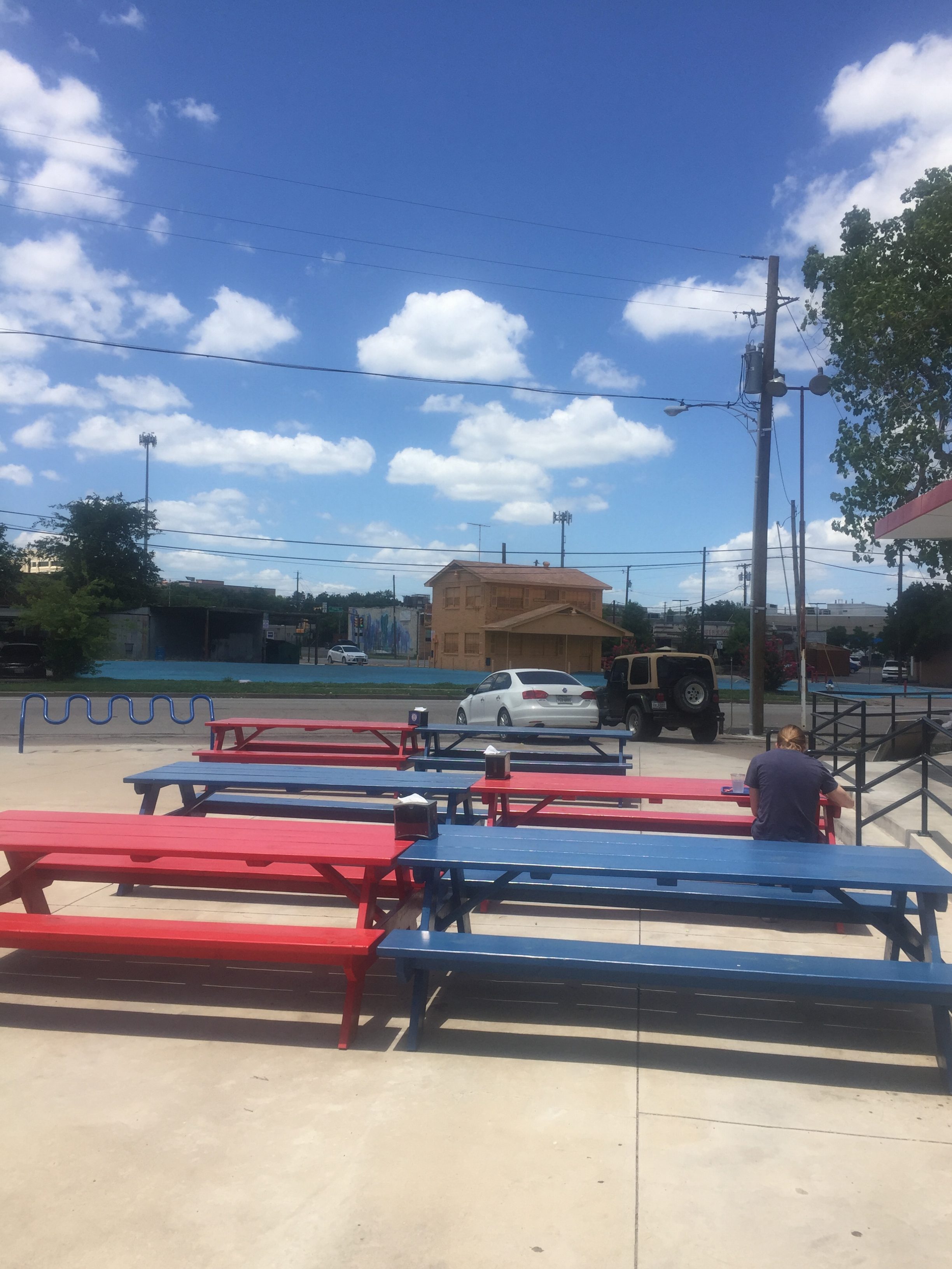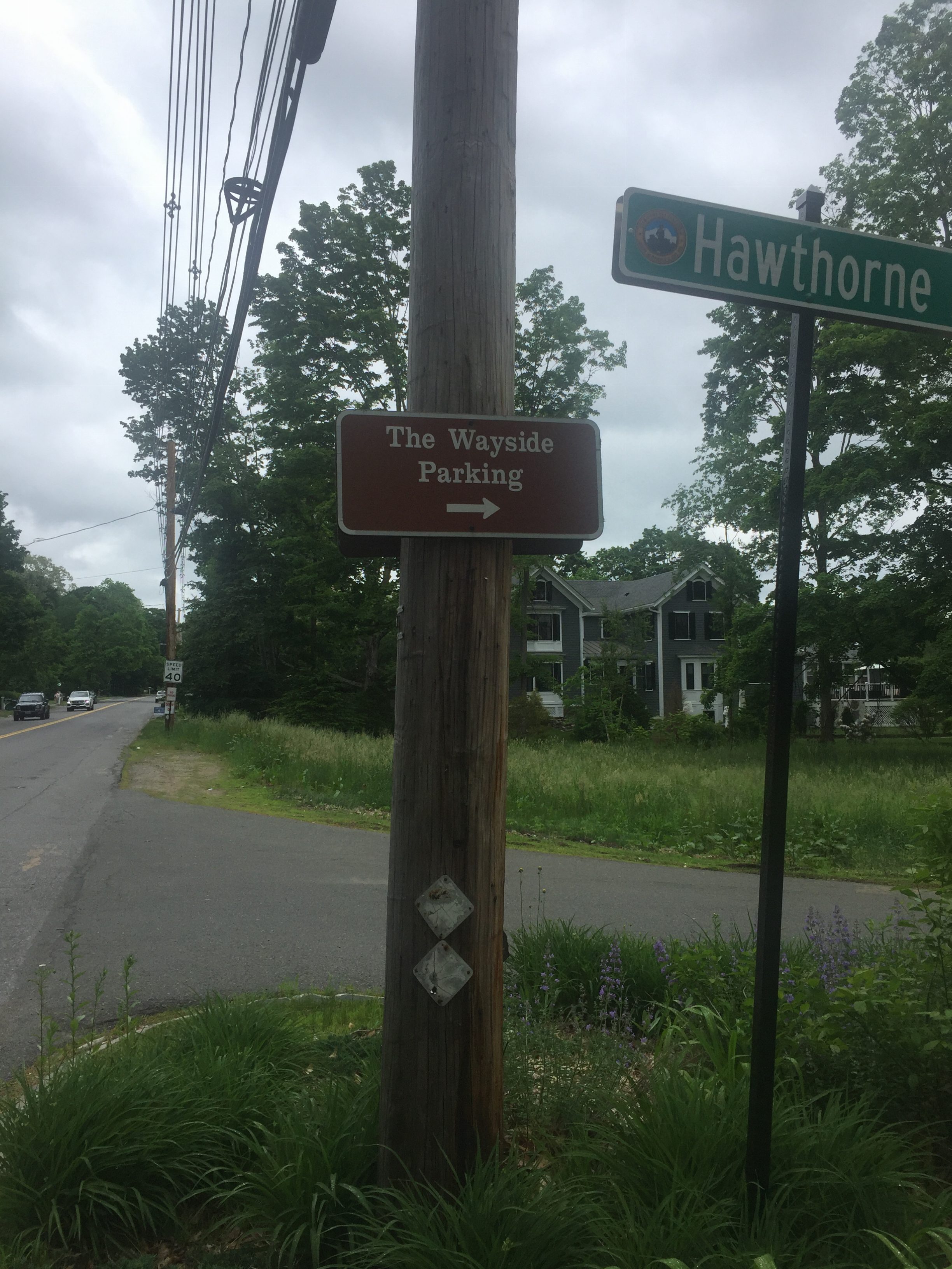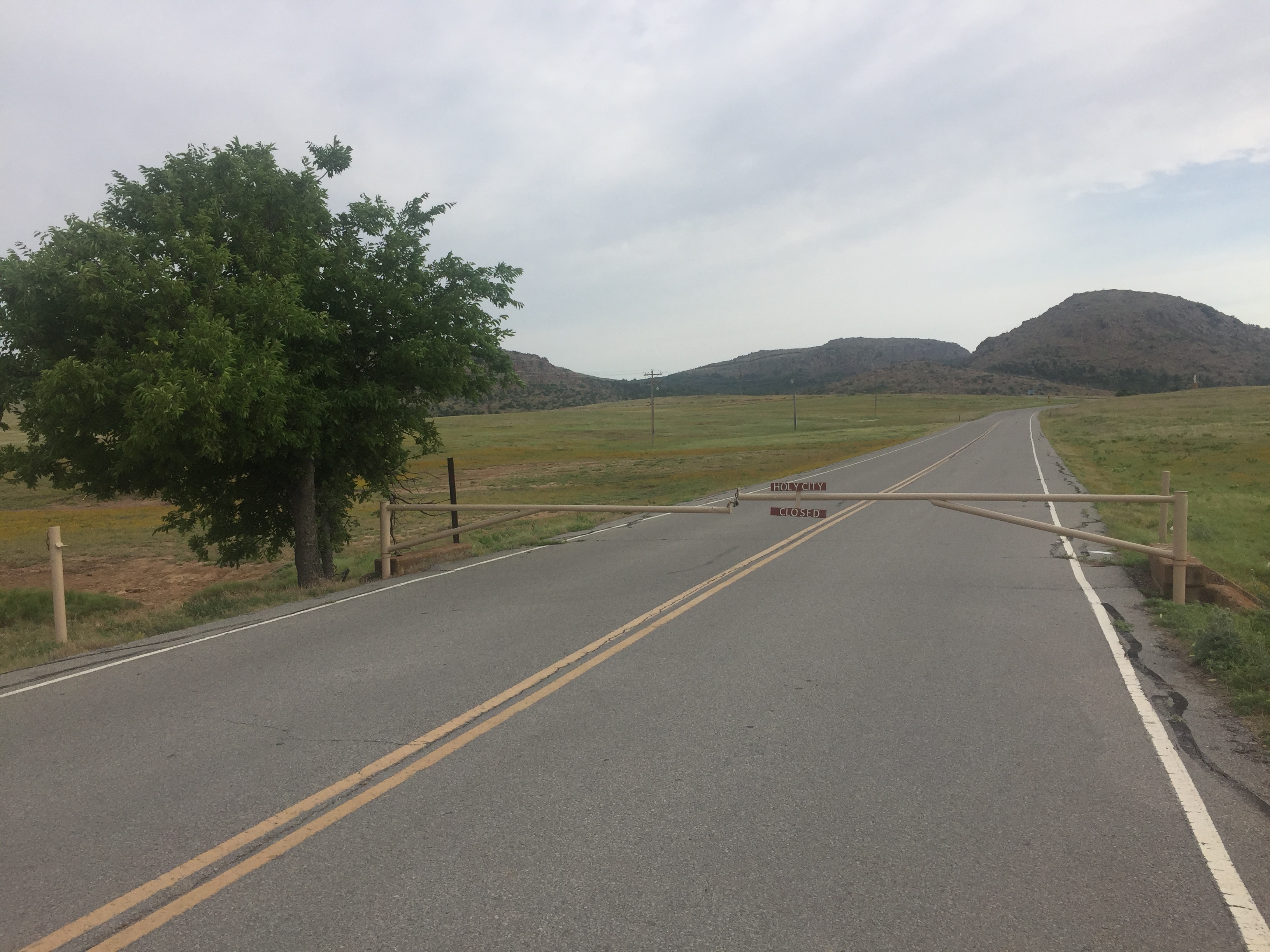odd house

The traveler explores the American Wayside, verifying the contents of a mysterious guide written by a man with whom he shares a likeness and name. Excerpts from ‘Autumn by the Wayside: A Guide to America’s Shitholes’ are italicized. Traveler commentary is written in plain text.

‘‘The Great Scrupulizor’ is a statue in the style of gaudy highway cowboys, built from the crotch up and hunched over a hill to hide the birds that live in the empty stumps of its legs. His shirt, once a deep navy, has faded to baby blue and the jolly red handkerchief about his neck has run pink in the sun. ‘The Scrupulizor’ holds a magnifying glass above the desert wastes, the thick fingers of his left hand prodding the sand for something he lost eons ago.
Locals tell the story of a woman who was immolated under the glass, evidenced by a dusty, black stain on the ground. They say she was a witch (implying ‘The Scrupulizor’ serves as bait and trap for vampires, wayward spirits, and other sun-sensitive evils). They say she wanted to die, that she was good, in life. They say she was beautiful and wanted the best for others. They say she was ugly and as hollow as the great statue that killed her.’
I dig in the sand under ‘The Scrupulizor’s’ glass, my back itching under the scrutiny of his great, magnified eye. Not a single grain of it turns up black, not after thirty minutes of scrabbling. A man across the highway takes note of me and stares from the diner parking lot, leaning on the cab of his semi and lighting new smokes with the butts of old ones. The ground becomes hot and the sun collects in prisms around me, shifting like the aura of a man possessed.
I give up before finding any evidence of the immolated woman and scrape the sand out from under my fingernails with the latest of Alice’s picks. When I’m through, I check the bike to confirm it still won’t start. The speedometer waggles in the direction of ‘The Great Scrupulizor’ and settles weakly to ‘0’ when I switch off the ignition.
Alice doesn’t want me going anywhere.
I drink the last of my water and prod the earth near ‘The Scrupulizor’s’ left hand, near where its index finger disappears into a tuft of dry brush. Something shudders inside the knuckle and heaves itself up through the palm, shaking flakes of paint from ‘The Scrupulizor’ and shrieking.
The man across the way lights up again and coughs.
The bike won’t start.
Once the thing inside the statue has settled, I walk the length of ‘The Scrupulizor’s’ body and plod my way up the hill where a vulture clutches the statue’s right buttock, balanced on a copper rivet in the jeans. It spreads its wings as though to fly away but, seeing I’m no threat, reconsiders and wraps itself tightly in its feathers.
The legs of ‘The Great Scrupulizor’ are modeled through the thigh but taper off after the knee, his bleached denim giving way to rusted metal before terminating entirely in two, man-sized holes. The birds that inhabit this statue have mostly gone about their day but evidence for their numbers remains in feathers and dripping white stalactites. Nobody has thought to barricade these entrances, the dark of the inside of ‘The Great Scrupulizor’ should suffice in turning away any straight-minded visitor.
The treads of my boots gunk up pretty fast with bird shit which leads to a lot of slipping and brushing up against bird shit covered walls, but past the lower calf and in the shallow cap of ‘The Scrupulizor’s’ knee I have the time and the space to consider the climb up into his torso and the shrieking thing exists somewhere beyond.
The climb isn’t so bad, aided by jutting rebar and sharp corners. Would be a real cheese-grater on the way down, though, a real tetanus gauntlet.
Things flatten out in the ass, again. The claws of the vulture scratch nervously above, aware that something shifts beneath it. I rest and start to wonder if I could make a life in this thing- a thought that comes to me in any tight space. I wonder if it’s water-tight. I wonder if someone would find me eventually.
Stuffy, though. Like all tight spaces.
And there’s the shrieking thing, of course.
I’m a careful person, but I make mistakes. I make one when I bring my flashlight over the arch of ‘The Scrupulizor’s’ waist and lose my grip on it. I make a mistake when I leap forward to grab the light (this cheap, totally unworthy piece of plastic) and feel myself slide past any hope of stopping. My body bounces about the metal skeleton of the statue like a pachinko ball before settling on a course that takes me down the left arm.
Something screeches past me on the way down, going the opposite direction, something that’s all fur and wide-eyed terror. Then I hit the bottom, twisting my ankle something nasty on the inside of ‘The Scrupulizor’s’ curled pinky. Below me, the skeleton of a woman in a scorched dress has pulled its way up through the unfinished point of the index finger. Alice rattles in her picks, content in having me witness another like her- someone lost in the wayside.
-traveler

On a white-sand beach, my body and my belongings amount to so much refuse. I sprawl there, fish-belly torso visible from space and round where I wish it was sharp. My buttoned shirt parts down the middle, jagged like the edges of an open wound, exposing flesh that is tender, swollen, and red. I close my eyes but see myself through the eyes of those around me and I become bitter and small- not at all unlike the ocean that shifts like a cat at my feet.
‘‘The Intimate Ocean,’ formed through the vigorous coupling of nature and performance art, manages to fit all the salinity and lunar movement of its larger cousins into an area just ten feet in diameter at high tide. Home to a small school of fish and a family of bluish crabs, the ‘Ocean’ hardly qualifies as a ‘pond’ in regards to size but makes up for it in questionable technicalities and the earnest condescension with which visitors treat the thing.
On any given weekend they arrive, visitors with knowing half-smiles and eyes that roll about in their heads to say ‘We, too, are in on it.’ They take up their small sand shovels or roll out lavish towels and, in the style of communal seating, cram together on the 31’ beach that encircles ‘The Intimate Ocean.’ They enjoy themselves, or, pretend to enjoy themselves, crafting miniature sand castles and reclining in mock worship of the sun.
The joke, of course, is that it is forbidden to mention the smallness of ‘The Intimate Ocean’ and outright blasphemous to suggest that, in regards to fun, the size of the thing is a limiting factor. As a society that has more or less embraced the ideal of the individual, the meta-climate of ‘The Intimate Ocean’ insists that we grit our teeth and smile when a stray foot collapses our moat or a careless elbow finds its way into our ribs because we experience the pain as part of a close, if temporary, community of beach-goers.
And when we do clear the sand from our eyes and look out over the ‘Ocean’ we see not the horizon, but the opposite shore.
And from a ways off, it does look nice.’
-traveler

I wonder, reader, if there may be a Medusa in me, for when I look upon others and see myself reflected there, I turn to stone.
-traveler

Sometimes the author of Shitholes, in an effort to invoke mystery or flex his purple pen, is scant on details that would, to a more traditional travel writer, be of some importance. Forgetting the sheer size and mobility of a carnivorous tree, for instance, or neglecting to mention a plague of sinkholes in a town that doubles as the last fairway of a golf course that spans the nation (Par 6).
With a length of dry rope in my hands and a groaning sickness in my stomach, I consider that the author seems to have done justice to the condition of ‘The Place Over Another.’
‘‘The Place Over Another’ is hardly a place (it being a rickety tire swing anchored to a dying tree) and what exists under it is hardly a place either (it being an abyss).
This is not to say that they are not impressive.
The tire of the swing once belonged to a tractor and, as such, can comfortably contain the bulk of a child and a small pool of stagnant water that exists there in perpetuity. The weight of riding has pulled the tree from the earth such that it now leans over the abyss and touches down on the other side with a dainty branch. Its vast root system is exposed save for a single, thick tendril that holds it in place and provides it with the nutrition necessary for survival. In the autumn months this tree is known to dangle apples in precarious places and to drop them noiselessly into the ‘Other’ as though threatening (or simply warning away) onlookers. The knot of rope that clings to the tire has fused with age and water into a great, brittle lump of fiber that creaks with warning under the lightest load- that creaks, sometimes, without instigation.
The combination of these things cannot be called safe except to say that it has not yet failed.
The abyss is impressive in an altogether different sort of way. It is deep enough to be endless and dark save for a pinprick of light in the center that riders of the swing say is a keyhole view to another world, visible only from the top.
Nobody who has made this claim has yet traveled downward.’
The tire hung over the center of the abyss and was absolutely without movement when I arrived. With a long prodding stick and the better part of an hour I was able to set it in motion and to catch it without slipping a careless foot over the edge. Now I stand, the sweat of my palms seeping into the rope.
And I place a leg inside.
As my weight transfers to the cracked rubber the tire begins to drag itself back to the abyss and I let it drag me along, sending the prodder through its hollow diameter and bracing myself for the edge. There is a stab of regret when it comes- the phantom ‘what-if’ that haunts moments like these but I will it away and stare determinedly down, seeking the glimpse of another world and finding, like those before me, that it is only a reflection of ours in a pool of water and apples.
Having performed my due diligence, I settle into the tire and find an unlikely restfulness in its movement. I sleep above the abyss and the pond and the reflection of our sky- a series of nested circles like a great eye, below.
-traveler

I stop on a hill in the outskirts of a city. Neither the city, nor its hill, are featured in Autumn by the Wayside. I rest in a patch of grass and shake one of Alice’s picks into my hand, turning it over several times and then bringing it to my mouth quickly, as an impulse.
Bitter, and understandably so.
The pick’s sisters jostle in their vial, warped from their soaking in ‘The Watery Grave’ and restless, I think, or blown by an otherworldly wind. The sun sets and the bitterness passes, giving way to the flavor of wood and a feeling of calm.
This has been a long trip- longer than I meant it to be. It has taken up time that may have been lent to better causes. I haven’t bettered the world. I have traded old burdens for new ones. I am physically less than I once was. I am, at times, mentally desolate. I often act only for the sake of acting.
Alice’s pick softens in the darkness. It wanders between the corners of my mouth, testing the air. It waits and it slowly dissolves and when I take a long, reflective breath, it leaps into the back of my throat and churns out a choking darkness that rises, in time, to blot the light from my eyes.
I see a woman in the darkness, Alice, and she holds hostage my air until I agree to a list of strangled promises- petty things that would only matter to the dead. I cough and expel a cloud of blood and splinters.
Within a week I find a bored mechanic to fasten one of the five remaining picks to the speedometer, the needle of which hasn’t moved in a year.
It moves now.
-traveler
© 2024 · Dylan Bach // Sun Logo - Jessica Hayworth